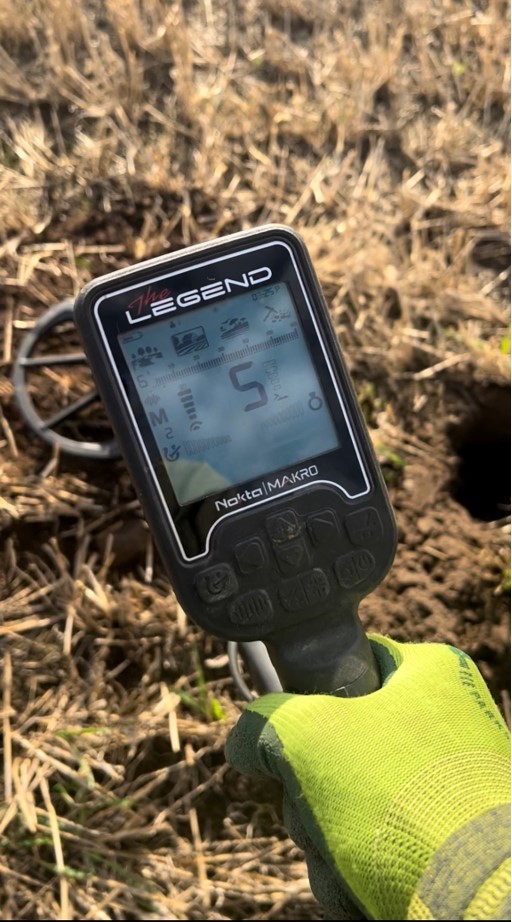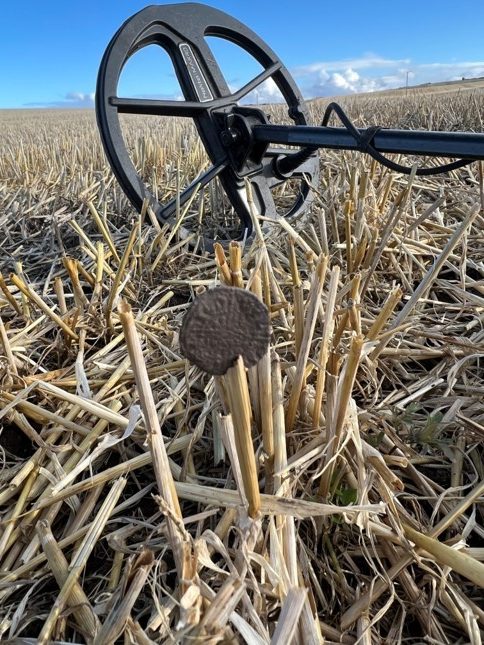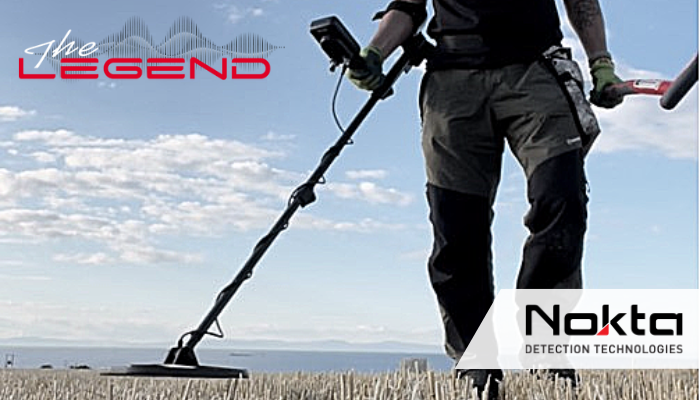On a daily basis my inboxes are stacked high with metal detecting related questions, the questions are as varied as those who pose them, but nonetheless I try to ensure that my responses are as accurate and informative as possible. There is one recurring question that regardless of its frequency, always finds me struggling to answer in a way that I would consider satisfactory, that is, of course, “what metal detector should I buy?”
This question has so many variables, so many in fact that I won’t go into them during this article. It is in fact worthy of its very own write up, but maybe that’s something that we will cover another time. The reason for my discomfort when I am asked that question is the sheer volume of choice! The market is awash with sensibly priced machines that punch well above their price range, so where do we start? With such a wide range of metal detectors, potential buyers quite rightly have many questions, and lots of those buyers turn to social media to try to navigate the minefield of reviews.
Multi frequency metal detectors
Not too many years ago it was quite an easy decision, if your budget could stretch to it, then Minelab’s new Multi IQ Equinox was the obvious choice. Having a machine that could cover all frequency ranges simultaneously would be a no brainer, but the introduction of the above mentioned Multi IQ had set a benchmark, one that found other manufacturers beavering away to provide their own equivalent. As a result of this, the leading manufacturers slowly introduced their own simultaneous multi frequency, some with more success than others. So, now what was once a holy grail performance enhancing setting that was only enjoyed by the owners of Minelab machines, is in various forms available to the owners of other brands, and now by definition is the norm!
It will come as no surprise then that I was slightly nonplussed at the arrival of the new Nokta Legend multi frequency metal detector. Would the new flagship for Nokta be any better than their competitors, or would it be just another machine floating around in a sea of similar contempories, after all what could they have done that the others haven’t?

The Nokta Legend metal detector wasn’t my first introduction to Nokta products, some time ago I had a brief exposure to the Simplex, the Simplex performed in my opinion as you would expect from a machine in that price range. It didn’t excite me or leave me wanting more, but the build quality was positive, and it was clear to see as I unboxed The Legend that they had continued with that same level of quality. The package that Joan Allen had sent to me was the Pro Pack, this consisted of The Legend fitted with its 11” coil, wireless headphones, external spare battery, a charger, a rather nice looking little additional 6” coil and a baseball cap. As I unboxed all these goodies from their carefully secured homes, I found myself studying of all things the baseball cap, this cap, emblazoned with the logo “The Legend” seemed a cut above all the other caps that I have received from other manufacturers in the past. This of course is of little consequence in the terms of field testing the actual metal detector, but it did leave me wondering if that attitude of quality had continued into the more important things, and I wasn’t disappointed.
Once the relevant parts and pieces had been slid, clicked, and locked into their relevant positions it soon became clear that The Legend was the perfect recipe, one that consisted of all the best parts of other leading brands rolled into one. The overall appearance of the control box and indeed the coil are not at all dissimilar to the Equinox, I’m sure if you were to squint your eyes or take a quick sideways glance one would be hard pressed to distinguish between the two! This analogy is by no means meant as a criticism, taking the best features from other machines and rolling them all into one is, in my book, a fantastic idea.
The addition of a flashlight neatly fitted to the back of the control box is something that many of us won’t have even given a second thought to. But after using various Quest metal detectors fitted with the same type of light, I grew used to this great feature, when trying to grab a couple of hours detecting in the last light of the day after work, or during the darker winter months. The square three peace shaft fitted with what so far have turned out to be sturdy and reliable cam locks, offer a solid wobble free feel, topped by the ability to quickly collapse the machine into a very small package.
The Stats!
So, what does The Legend have to offer?
Well, firstly and probably most importantly it has simultaneous multi frequency, operating between 4 KHz to 40Khz, it also allows the user to select the following manual frequencies should they wish to do so, 4, 10, 15, 20 and 40 KHz respectively. It is fully waterproof, has a battery life of 8 to 20 hours depending on frequency used and other factors such as the use of the flashlight. The VDI display is 0-60 although I’m not a numbers person and prefer to dig the tones. There are four detecting modes much the same as you will find on other machines; Park, Field, Beach and Goldfield, although unlike some of The Legends’ competitors, Nokta decided to optimise their beach mode as an all in one, instead of having dry sand or wet sand as different settings. The display offers the user lots of information while at the same time not cluttering the screen with too many indicators, but there is one feature displayed on the screen that for me really stands out.
The standout feature that I am referring to is simple but in my opinion an essential must have on all metal detectors. This little gem of information resides neatly in the top right corner of the display screen. What am I talking about? A clock! Being able to glance down and quickly check the time is a must. We all know how “just a few more minutes” can all to easily turn into hours. It was for me a feature that set the XP Deus in a classier league, so finding this addition on The Legend pleased me no end. Not content with simply placing a means to tell the time on the display screen, Nokta also included the ability to be able to track total detecting time, the total detecting time is displayed in a YY-MM-DD-HH format. For a short time, I did wonder what the purpose of this feature was, after all it isn’t dissimilar to an odometer on a vehicle, but over time as I watched the total hours of use turn into days then weeks, I did find myself starting to track my time out detecting more and more. If anything, the novelty value of being able to prove just how experienced and seasoned you are to your fellow detectorists make it a great addition, after all we have all endured other detectorist’s tales about the hundreds of hours that they have spent using their machine, with The Legend they can prove it!
Getting down to the important part, performance!
Adjusting the square shaft to suit your needs takes but a few seconds, the quick release cam locks snap open easily allowing you to effortlessly slide it into the desired position, and then snap closed again ensuring no play or wobbling. Nearly ten months have been and gone since I received The Legend, and, as of yet, the shaft still slides smoothly when collapsing it to place it in the car, the cam locks still work as well as when I first unboxed it and importantly there is still no play in the shaft. Nokta has worked hard to ensure that The Legend hit the ground running, but as with all new machines there are inevitably going to be some minor issues. The very instant I first swung The Legend I noticed something that has continued to niggle at me ever since, and that is that it has a slightly nose heavy feel to it! The Legend is by no means a heavy metal detector weighing in at only 1.4kg, only a mere 50 grams heavier than the Equinox, so the coil-heavy feeling isn’t so much a weight issue but more a factor of balance. The balance problem if I’m honest is not really an issue,
but for me it’s a slightly irritating niggle that I always notice when I first pick it up, for others it may be completely imperceptible, and after a few swings I quickly forget about it. Another feature Nokta introduced to The Legend was the ferrous check, a sliding scale that offers the user a visual indication to weather the target is ferrous or nonferrous. This ferrous check is designed to be used as a confirmation of the tones the user receives, however I quickly learned to pay little attention to it choosing to rely on the tones only. The ferrous check will quite often indicate the target to be ferrous, but when you dig the target regardless, often you will discover that the target is in fact nonferrous, so I would advise that you use it merely as a guide and instead use the tones.
I am going to avoid talking about settings on The Legend in this article to prevent it from turning into a novel. For most, factory pre-sets will be more than adequate however, for those that want to delve that little bit deeper, there are plenty of options and adjustability to suit all needs. Depth is another potentially contentious topic because each time a new machine is released, often the first questions asked are “how deep is it?” or “is it deeper than the ….?” This is a topic that I’ve written about in depth (pardon the pun) in the past. Most new well-known brands on the market today have adequate detecting depth, and it is relative to many factors. Consistency is in my view key, after all most finds are found in the first few inches of the plough soil. To answer the inevitable question, yes, The Legend detects to a good depth.

Tones and recovery
Even when set to the factory pre-sets The Legend is sharp and recovers well, it is very much at home in a busy scrappy environment, but it is equally happy in quiet pasture where you can lower the recovery speed, up the sensitivity and just let it do what it does best. The tones and their adjustment options mean that one can set The Legend to exactly how you want it, with all the available settings and options available, at no point have I found myself wanting more control.
As you start to learn The Legend over time and really start to turn up the performance, you notice that it is a quick machine. By quick I don’t simply mean recovery speed, I also mean the sharp and snappy tones as you hit a target. This sharpness means that you can confidently move along the ground at a good pace and be safe in the knowledge that it will pick out those good targets amongst the undesirable ones. The actual audio of the tones is for me slightly on the harsh side, not quite XP Deus in its harshness but just enough to make your mind wander to the melodic softness of tones found in the Minelab machines.
How is Nokta Makro the Legend all round?
I mentioned at the start of this article that The Legend seems to be a blend of all the good aspects of its fellow competitors, and for me this is what makes it stand out from the rest slightly. A plethora of little additions and features that if they were a singular addition perhaps wouldn’t make much of a difference, but as a collection of features they prove to be a force multiplier. The spare external battery, perfect for weekend digs where there may be a lack of charging facilities, the flashlight for those forays into the last light as you try desperately to find that last artefact while you race against the setting sun. The touch of class added by the solid square shaft and the impressive cam locks, or the clean and business-like display that allows you to easily adjust and tweak as you go along. The Pro Pack and all its extra goodies including its 6” coil for those hard-to-reach areas or if you really want to separate the good targets from a busy trashy location, oh and did I mention the clock?
All these combine to make The Legend something a bit different, refreshing even, refreshing because it feels like Nokta listened to their customers and in doing so gave them exactly what they wanted. People were quick to compare The Legend to The Equinox, but although they both in essence do the same thing, to my mind they are quite different and that is what makes The Legend endearing to me. Another factor to consider is that to build The Legend to the standard that it is, Nokta have pushed it into the higher end of the market relative to its price, so in fact it is actually standing in the ring with the Equinox, or Deus II, with it’s price ace up its sleeve!
Summary
Throughout my time testing and using the Nokta Legend I have found myself warming to it, the more I use it the more I enjoy it, this is something quite opposite to some of the other machines I have used and tested in the past. I feel that The Legend is aimed toward the intermediate to advanced user, mainly as a reflection of its price. It is much cheaper than a Deus II and slightly less expensive than an Equinox 800, but retailing at around £800, it is in a price range in which you would expect the more seasoned buyers to be. That said, newcomers to the hobby would have no problem in picking up The Legend and finding their way with it, the user manual and online tutorials are clear and concise and offer all the information needed to use it.
The free software downloads offered by Nokta ensure that The Legend remains updated and always running at peak performance, and regardless of whether you are a seasoned pro or just starting out in the world of metal detecting, The Legend will be perfect for all. There are some aspects of it that I don’t like, most of which I have already mentioned, namely the nose heavy feel and the harshness of the tones, but none of these really detract from what I consider to be a very good all round metal detector.
Nokta Makro's The Legend Metal Detector surprised me, but it was a good surprise, I didn’t expect to enjoy it as much as I did. Good work Nokta!

